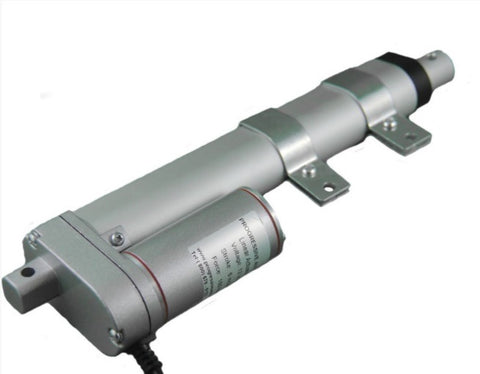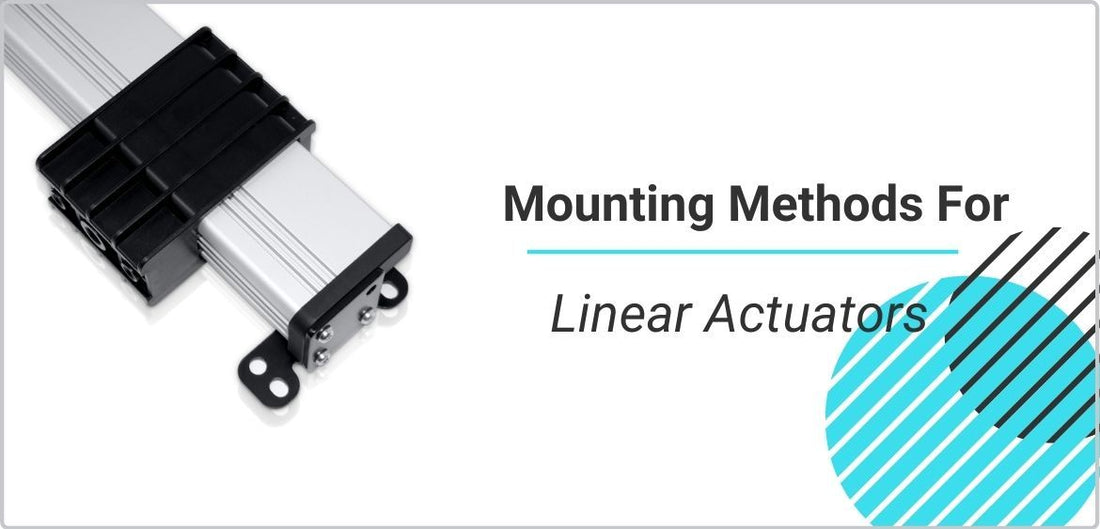A Linear actuator is a common mechanical component in many industries. The applications in which linear actuators are used in very diverse and provide a variety of interesting automation possibilities. It is important to choose the right actuator for the job, but it also needs to be mounted correctly in the application for it to function properly. In this article, we will discuss a few common methods of mounting a linear actuator and what you need to pay attention to when installing them.
Method 1
The most common method to mount your linear actuator is the dual-pivot mounting method. This common mounting arrangement consists of mounting the linear actuator on both ends with a free to pivot mounting point usually involving a clevis and mounting pin. This mounting method allows the actuator to pivot on both sides as the actuator extends or retracts. It allows the application to move on a fixed path while maintaining two free pivot points.
This is extremely useful for applications where you need to open and close doors. The two fixed points allow the door to swing open along the hinge when the actuator extends, and the pivot offers free rotating space for the two mounting points when the angle changes as the door swings open and closed. It is important to make sure there is a clear path for the actuator to extend and that no other objects are in the way.

Method 2
Another common method to mount your linear actuator is the stationary mounting method. This is a simple arrangement where the actuator is fixed in a stationary position. The stationary mounting can be applied by having a shaft mounting bracket securing the actuator to an object along the shaft. It is generally used in applications where the linear actuator is needed to push something head-on, such as triggering a button or pushing a bellow to compress or inflate. The important thing to remember is to make sure the mounting apparatus is rated to handle the load of the linear actuator. Depending on the number of mounting points, the mounting apparatus will sometimes take an entire load of your application.

Factors to Consider
There are a few other important factors that need to be taken into account when mounting your units. First, there should not be any significant side load applied to your actuators. Depending on the linear actuator you are using, it will be able to handle various weights according to its rated specification; however, it is not rated for any force that is applied on its side. If a significant side load is applied, the application runs the risk of bending the extension rod or more likely causing the extension rod to scrape against the actuator's outer casing.Second, users need to make sure there are no large eccentric loads on your actuator. If the weight is not positioned in the center of the mounted unit, it is subject to the tilting on the side, which would run into the same issue as the side load scenario.
The final factor to be considered is the environment in which the linear actuator is mounted. The user needs to consider the external factors of the environment of their application such as water and dust. Choose the proper material for the mounting device, and ensure the right amount of maintenance is performed. If left unattended, rust could comprise the mounting apparatus, and dust could cause obstruction to the motion of the linear actuator.
The above are just a few ways to mount your actuators as well as the things you should look out for when mounting. It is important to remember linear actuators can be used in many types of applications, and the mounting method can be very different with each one. Each has their own different challenges and needs. Take a look at our selection of mounting brackets for all our actuator models. If you do have a question on how you should mount your linear actuator, please contact us at 1-800-676-6123, and one of our engineers will be happy to assist you.




